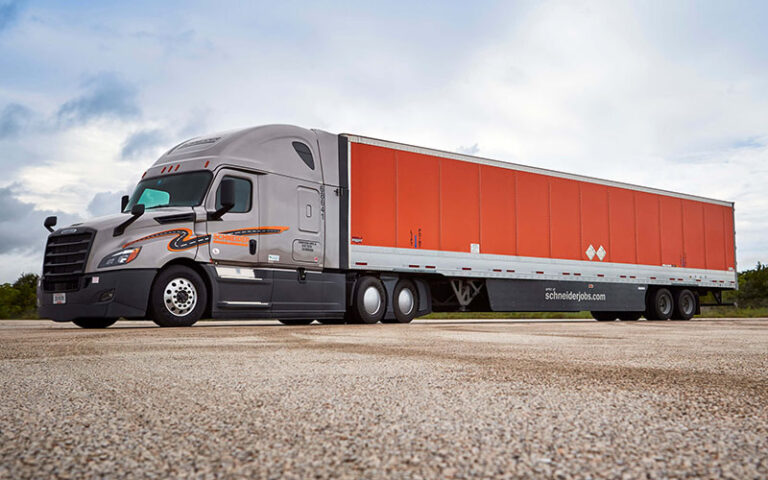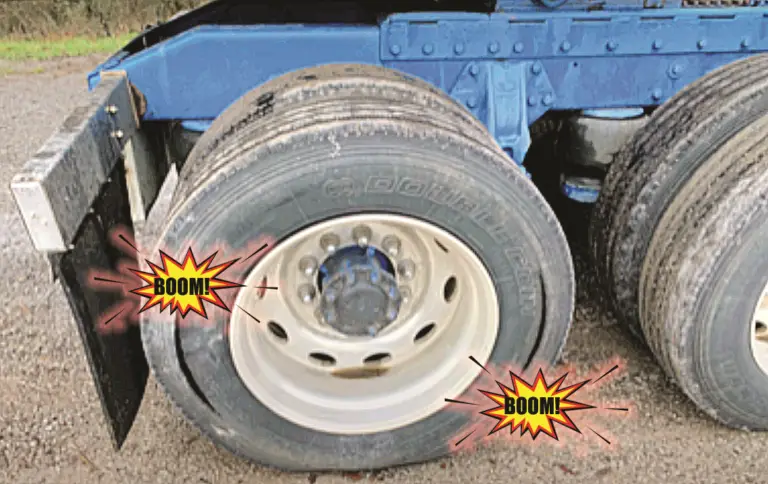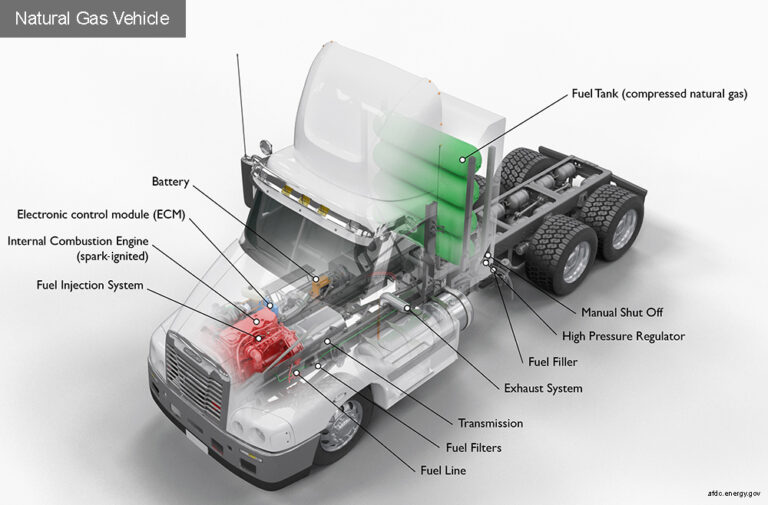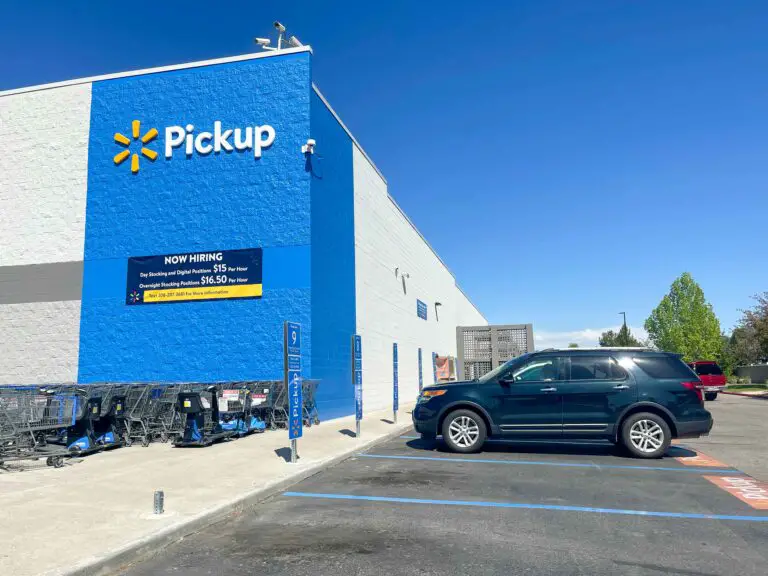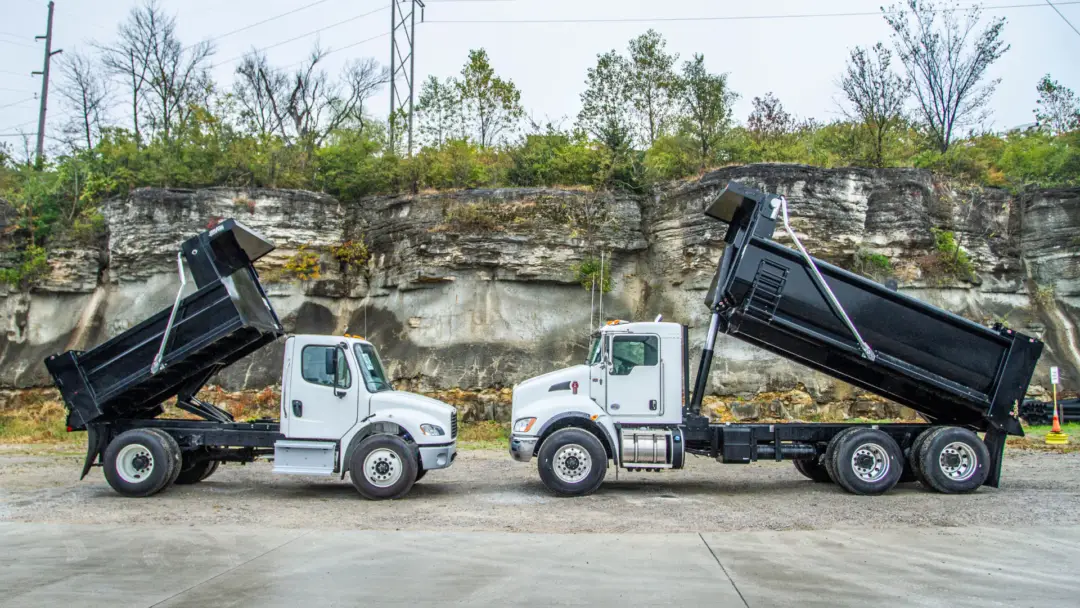
Heavy-duty trucks, including semis and dump trucks, are designed for transporting large and heavy loads over long distances or rough terrain. These trucks are equipped with powerful engines, sturdy frames, and specialized features to handle heavy payloads and provide maximum stability and safety on the road.
Heavy-duty trucks are a crucial part of various industries such as construction, agriculture, and transportation. Understanding the different types and functionalities of these trucks is essential for anyone involved in these sectors. From the immense power of semi-trucks to the practicality of dump trucks, each vehicle serves specific purposes and requires unique operational skills.
This article aims to provide a comprehensive understanding of heavy-duty trucks, highlighting their key attributes, applications, and significance in the modern industrial landscape.
Navigate As You Want: [show]
The Basics Of Heavy-duty Trucks
In order to fully understand heavy-duty trucks, it is important to grasp the basics of these powerful vehicles. From semis to dump trucks, they play a crucial role in a variety of industries, such as construction, transportation, and logistics. Let’s dive into the different types of heavy-duty trucks and explore their key features.
Different Types Of Heavy-duty Trucks
Heavy-duty trucks come in various types, each designed for specific tasks and industries. Here are some of the most common types:
- Semi-Trucks – also known as tractor-trailers, these trucks feature a powerful engine and a trailer for hauling goods.
- Dump Trucks – equipped with a hydraulic system to lift and unload materials, dump trucks are commonly seen at construction sites.
- Tanker Trucks – specially built to transport liquids or gases, such as fuel, chemicals, or milk.
- Flatbed Trucks – with an open flatbed area, these trucks are used to transport large and bulky items, such as machinery or containers.
Key Features Of Heavy-duty Trucks
Heavy-duty trucks are built to withstand demanding tasks and challenging terrains. Here are some key features:
| Feature | Description |
|---|---|
| Powerful Engines | These trucks are equipped with robust engines that provide high torque and horsepower to handle heavy loads. |
| Durable Suspension Systems | To ensure stability and smooth driving, heavy-duty trucks are equipped with strong suspension systems capable of absorbing shocks. |
| Enhanced Braking Systems | Due to the weight they carry, heavy-duty trucks have advanced braking systems that can stop the vehicle safely and efficiently. |
| Specialized Transmissions | These trucks have specialized transmissions, such as manual or automatic transmissions, designed for heavy-duty operations. |
| Maximum Payload Capacity | Heavy-duty trucks boast impressive payload capacities, allowing them to transport substantial amounts of materials or products. |
Understanding the different types of heavy-duty trucks along with their key features provides a solid foundation for comprehending the immense capabilities and functionalities of these formidable vehicles.

Credit: www.badgertruck.com
Semis: The Backbone Of The Trucking Industry
Semis, also known as semi-trailer trucks or tractor-trailers, are the backbone of the trucking industry. These heavy-duty trucks play a pivotal role in transporting goods across long distances, making them an essential component of the logistics and transportation sector.
Definition And Function
A semi-truck consists of a tractor unit that pulls a detachable trailer, enabling it to carry a wide range of cargo. The tractor unit, equipped with a powerful engine, provides the necessary propulsion and control, while the trailer offers ample space for storing goods. This setup allows semis to transport large quantities of products efficiently over highways and interstates, making them a cost-effective solution for long-haul shipments.
Components And Parts
The key components of a semi-truck include the engine, transmission system, cab, sleeper berth, trailer, wheels, and suspension. The engine provides the necessary power, while the transmission system ensures smooth gear changes. The cab serves as the control center for the driver, equipped with advanced technologies to monitor the truck’s performance. Additionally, the sleeper berth offers a resting area for long-haul drivers, ensuring their comfort during extended journeys.
Benefits And Challenges
One of the primary benefits of semis is their ability to transport large volumes of goods over long distances efficiently. This makes them a preferred choice for freight transportation companies looking to optimize their logistical operations. However, semis also come with challenges such as maneuvering in congested urban areas and the potential for driver fatigue during extended trips. Despite these challenges, semis remain an indispensable asset in the transportation and shipping industry.
Dump Trucks: Heavy Haulers On Construction Sites
Dump trucks are heavy haulers commonly found on construction sites, playing a crucial role in transporting and unloading materials such as sand, gravel, and debris. Their robust build and versatile design enable them to handle the toughest terrains, making them indispensable in the construction industry. Let’s delve deeper into the role and purpose, types, and operating mechanisms of these heavy-duty machines.
Role And Purpose
Dump trucks serve as vital assets on construction sites, facilitating the efficient movement and disposal of materials. Their primary function is to transport loose materials from one location to another, ensuring a smooth workflow within construction projects. They play a pivotal role in earthmoving operations, site preparation, and infrastructure development.
Types Of Dump Trucks
Various types of dump trucks cater to different operational requirements, including standard dump trucks, articulated dump trucks, transfer dump trucks, and off-road dump trucks. Each type is specifically designed for diverse terrains and load capacities, providing flexibility in meeting the demands of different construction projects.
Operating Mechanisms
Dump trucks operate using hydraulic systems to lift and tilt their beds for unloading materials. The hydraulic system consists of a hydraulic pump, cylinders, and control valves, enabling precise and efficient dumping of materials. Additionally, dump trucks are equipped with specialized features such as rear hinges and tailgates to streamline the unloading process.
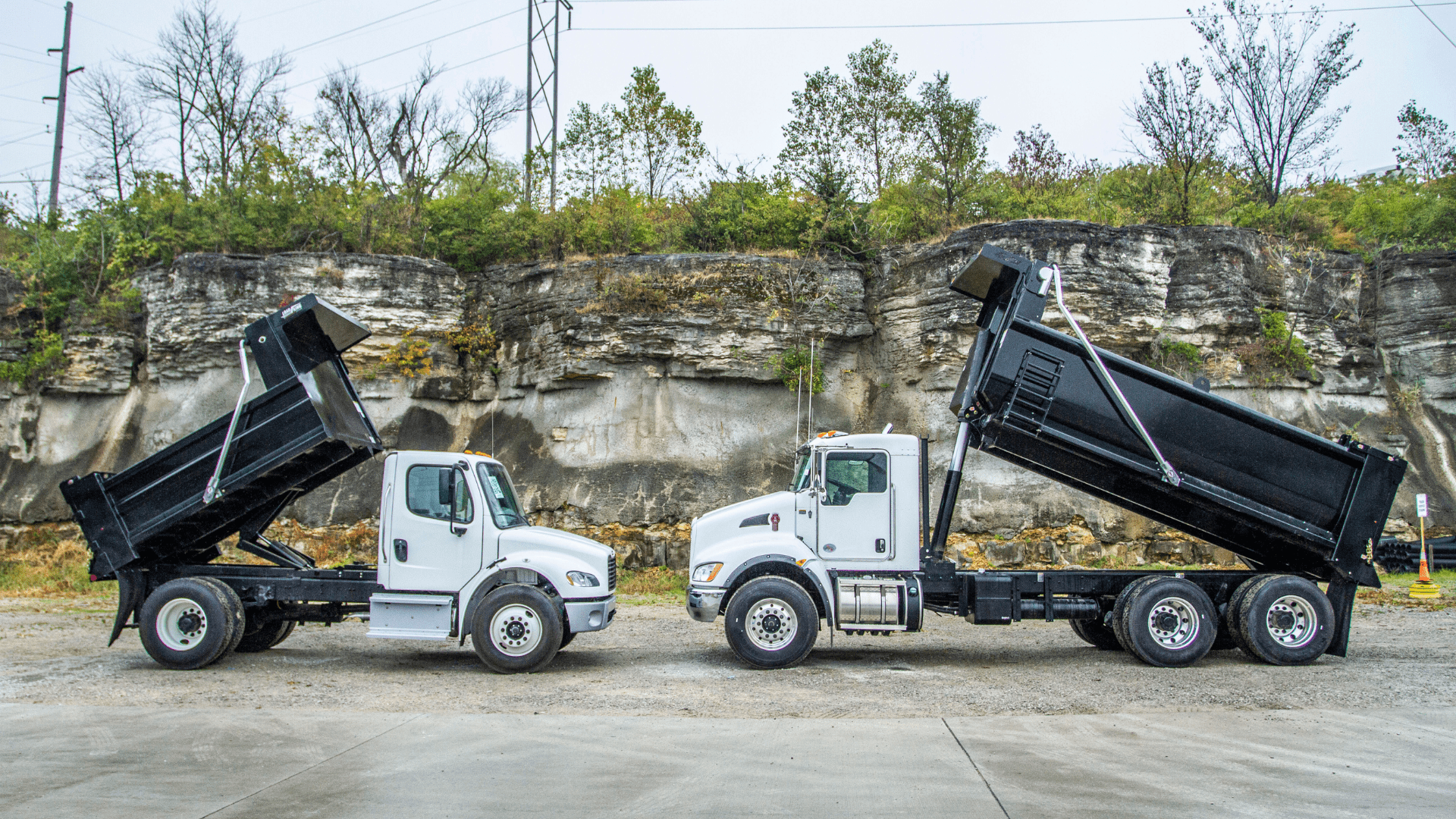
Credit: www.customtruck.com
Comparing Heavy-duty Trucks: Semis Vs. Dump Trucks
Heavy-duty trucks play a crucial role in various industries that require the transportation of heavy loads. Two popular types of heavy-duty trucks are semis and dump trucks. While both these trucks are designed to handle heavy loads, they serve different purposes and are equipped with distinctive features. Let’s take a closer look at the unique characteristics of semis and dump trucks, as well as their applications and use cases.
Distinctive Features Of Semis
Semis, also known as tractor-trailers or semi-trucks, are widely recognized for their ability to transport large quantities of goods over long distances. These vehicles consist of two separate parts: a powerful engine known as the tractor or cab, and a detachable trailer that is connected to the tractor. The distinctive features of semis include:
- Long Haul Capabilities: Semis are specifically designed for long-distance transportation, making them ideal for shipping goods across states or even countries.
- Multiple Axles: Semis have multiple axles, which distribute the weight of the load evenly, ensuring better stability and control on the road.
- Sleeper Cab Option: Many semis are equipped with sleeper cabs, providing drivers with a comfortable resting space during their long journeys.
- Ability to Handle Various Types of Cargo: Semis can transport a wide range of goods, including refrigerated items, dry goods, vehicles, and even hazardous materials.
Distinctive Features Of Dump Trucks
Dump trucks, on the other hand, are specifically designed for heavy-duty hauling and dumping operations. These trucks are equipped with hydraulic systems that allow them to lift and tilt the truck bed to unload materials. Here are the distinct features of dump trucks:
- High Capacity Truck Bed: Dump trucks have a large, sturdy truck bed that can carry and transport loose materials such as soil, gravel, sand, and construction debris.
- Hydraulic Dumping Mechanism: The hydraulic system enables dump trucks to raise the truck bed and dump the materials at the desired location, making them perfect for construction sites and other similar operations.
- Off-Road Capabilities: Dump trucks are built to handle rugged terrains and uneven surfaces due to their powerful engines, durable tires, and robust suspension systems.
- Specialized Body Designs: Dump trucks come in various specialized designs such as standard dump trucks, semi-trailer dump trucks, and articulated dump trucks, each suited for specific tasks and terrains.
Applications And Use Cases
Due to their unique features, semis and dump trucks are utilized in different industries and serve distinct purposes. Semis find their applications in the transportation and logistics industries, enabling efficient delivery of goods across long distances. They play a crucial role in the supply chain, supporting industries such as retail, manufacturing, and e-commerce.
Dump trucks, on the other hand, are widely used in construction, mining, and landscaping industries. These trucks efficiently transport and deliver materials to job sites, such as aggregates for construction projects or soil for landscaping purposes. Their ability to unload materials in a controlled manner gives them an advantage over other types of trucks when it comes to large-scale hauling and dumping operations.
The Future Of Heavy-duty Trucks
As technology continues to advance at a rapid pace, heavy-duty trucks are not exempt from these revolutionary changes. From semis to dump trucks, the future of these vehicles is looking brighter than ever before. Let’s dive into some of the key aspects that are shaping the future of heavy-duty trucks.
Technological Advancements
Heavy-duty trucks have come a long way in terms of technology, and the future promises even more exciting developments. These advancements focus on enhancing safety, efficiency, and overall performance of these powerful vehicles.
- Automated Driving Systems: With the emergence of self-driving technology, heavy-duty trucks are poised to become more efficient, as well as safer on the road. These systems will not only reduce human error, but also enable trucks to communicate with each other, streamlining traffic flow.
- Telematics and Connectivity: With the help of advanced telematics systems, heavy-duty trucks can now gather and transmit real-time data. This technology allows fleet managers to monitor vehicle performance, conduct predictive maintenance, and optimize fuel efficiency.
- Collision Avoidance Systems: Safety is a top priority for heavy-duty trucks, and collision avoidance systems play a crucial role in preventing accidents. Through the use of sensors and cameras, these systems can detect potential hazards and automatically apply brakes or provide warnings to the driver.
Alternative Fuel Options
In an era where environmental concerns are at the forefront, heavy-duty trucks are embracing alternative fuel options to reduce their carbon footprint. These eco-friendly solutions are paving the way for a greener future of transportation.
| Fuel Type | Advantages |
|---|---|
| Natural Gas (CNG/LNG) | Lower emissions, cost-effective, abundant availability |
| Electric | Zero emissions, quieter operation, potential for lower maintenance costs |
| Hydrogen Fuel Cell | Zero emissions, longer range, quick refueling time |
As fossil fuel reserves continue to dwindle and the need for sustainable solutions grows, heavy-duty trucks are embracing these alternative fuel options in order to build a cleaner and more sustainable future.

Credit: www.amazon.com
Frequently Asked Questions
What Are Heavy-duty Trucks Used For?
Heavy-duty trucks are used for various purposes including long-haul transportation, carrying heavy loads, construction projects, waste management, and more. They are designed to handle tough conditions and provide the necessary power and durability for demanding tasks.
How Much Weight Can A Heavy-duty Truck Carry?
The weight capacity of heavy-duty trucks varies depending on the specific model and configuration. On average, heavy-duty trucks can carry anywhere from 20,000 to 80,000 pounds or more. Different types of trucks have different weight limitations based on their design and intended use.
What Is The Difference Between Semis And Dump Trucks?
Semis, also known as tractor-trailers or semi-trucks, are designed to pull heavy cargo in a separate trailer. Dump trucks, on the other hand, have their cargo area integrated into the truck itself and are primarily used for transporting loose materials like gravel or dirt.
Conclusion
Understanding heavy-duty trucks is essential for anyone interested in the world of transportation. From semis to dump trucks, these vehicles play a crucial role in various industries. By getting acquainted with the different types of heavy-duty trucks and their respective functions, you can gain a deeper appreciation for the hard work and versatility they bring.
Whether it’s hauling freight or moving rubble, heavy-duty trucks are the backbone of our modern economy. So, next time you see one on the road, take a moment to recognize their importance and the skilled professionals behind the wheel.
